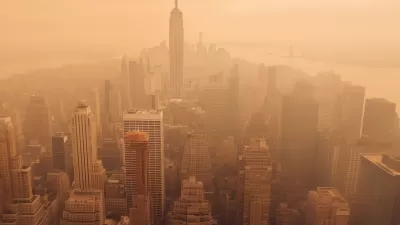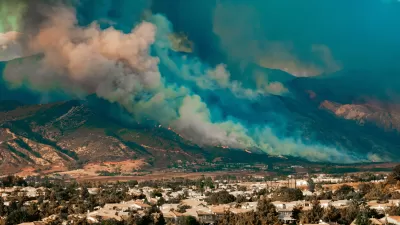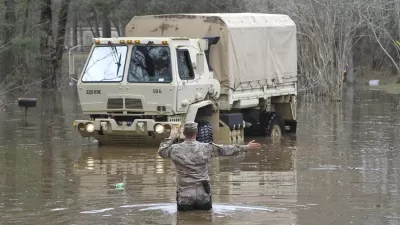Researchers are working to understand how people behave during wildfire events and how to most effectively get people to safety during deadly fires.

In a piece for Wired, Aarian Marshall describes the growing field of wildlife evacuation research, which is becoming a more crucial piece of cities’ emergency plans as wildfires become more destructive and unpredictable.
When evacuations go wrong, they really go wrong. In LA’s Pacific Palisades neighborhood, panicked drivers stuck in traffic abandoned their vehicles in the middle of evacuation routes, leaving emergency crews unable to reach the fires. Authorities used bulldozers to push empty cars out of the way.”
Researchers are working to understand how people respond to evacuations and how to most effectively get key information across in emergency situations. “The research thus far suggests that reactions to wildfires, and whether people choose to stay, go, or just wait around for a while, can be determined by a bunch of things: whether residents have been through wildfire warnings before, and whether those warnings were followed by actual threats; how the emergency is being communicated to them; and how the neighbors around them react.”
While some residents who have experienced fires before are more likely to stay, others are more likely to evacuate. Lower-income people are less likely to flee, most likely due to reduced access to transportation and lodging. According to Marshall, “It’s a faint silver lining, that the horror Californians experienced this week might produce important findings that will help others avoid the worst in the future.”
FULL STORY: The Evolving (and Inexact) Science of Wildfire Evacuation

Alabama: Trump Terminates Settlements for Black Communities Harmed By Raw Sewage
Trump deemed the landmark civil rights agreement “illegal DEI and environmental justice policy.”

Planetizen Federal Action Tracker
A weekly monitor of how Trump’s orders and actions are impacting planners and planning in America.

Why Should We Subsidize Public Transportation?
Many public transit agencies face financial stress due to rising costs, declining fare revenue, and declining subsidies. Transit advocates must provide a strong business case for increasing public transit funding.

Understanding Road Diets
An explainer from Momentum highlights the advantages of reducing vehicle lanes in favor of more bike, transit, and pedestrian infrastructure.

New California Law Regulates Warehouse Pollution
A new law tightens building and emissions regulations for large distribution warehouses to mitigate air pollution and traffic in surrounding communities.

Phoenix Announces Opening Date for Light Rail Extension
The South Central extension will connect South Phoenix to downtown and other major hubs starting on June 7.
Urban Design for Planners 1: Software Tools
This six-course series explores essential urban design concepts using open source software and equips planners with the tools they need to participate fully in the urban design process.
Planning for Universal Design
Learn the tools for implementing Universal Design in planning regulations.
Caltrans
Smith Gee Studio
Institute for Housing and Urban Development Studies (IHS)
City of Grandview
Harvard GSD Executive Education
Toledo-Lucas County Plan Commissions
Salt Lake City
NYU Wagner Graduate School of Public Service





























